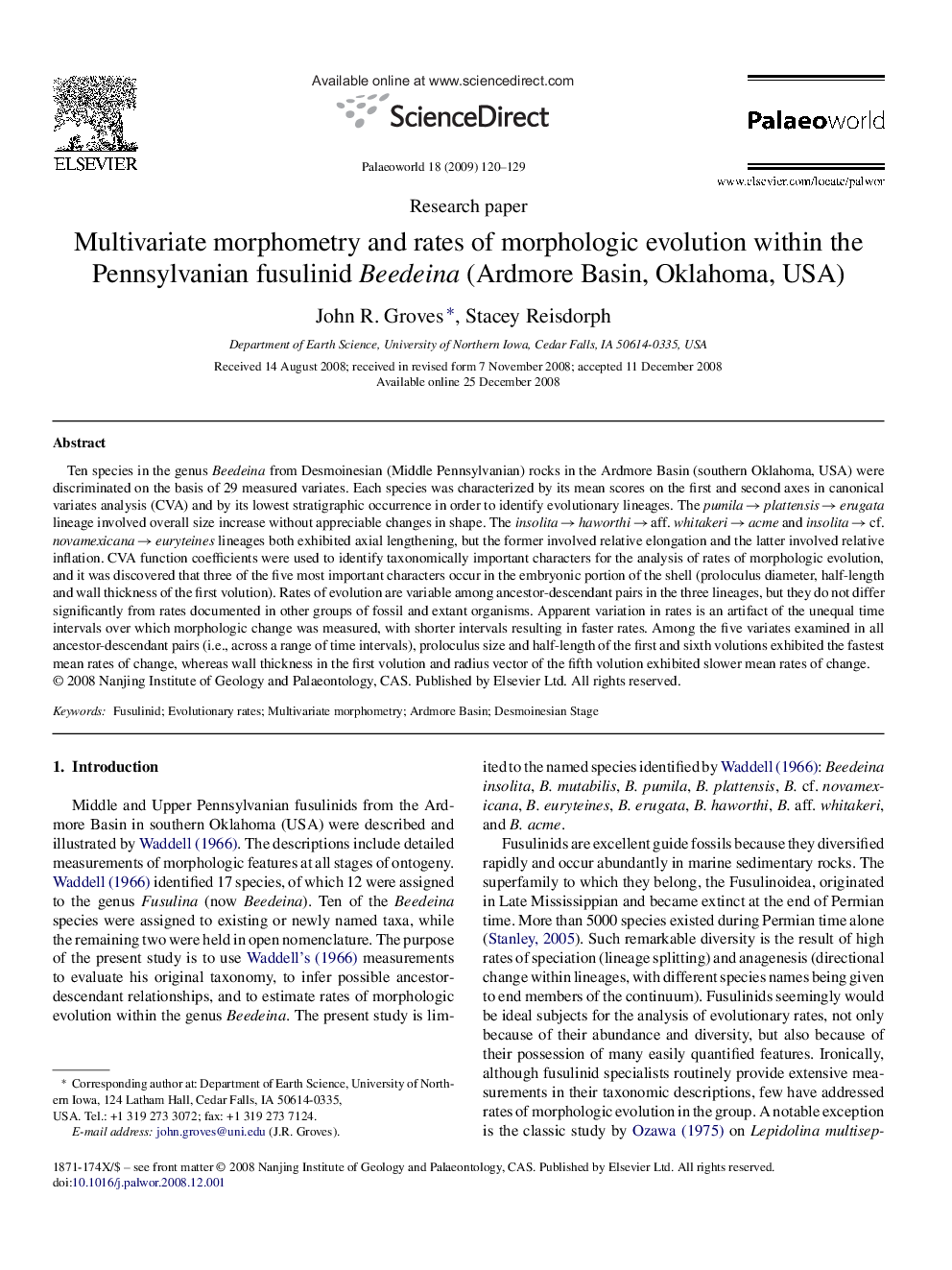| کد مقاله | کد نشریه | سال انتشار | مقاله انگلیسی | نسخه تمام متن |
|---|---|---|---|---|
| 4749941 | 1642284 | 2009 | 10 صفحه PDF | دانلود رایگان |
عنوان انگلیسی مقاله ISI
Multivariate morphometry and rates of morphologic evolution within the Pennsylvanian fusulinid Beedeina (Ardmore Basin, Oklahoma, USA)
دانلود مقاله + سفارش ترجمه
دانلود مقاله ISI انگلیسی
رایگان برای ایرانیان
کلمات کلیدی
موضوعات مرتبط
مهندسی و علوم پایه
علوم زمین و سیارات
فسیل شناسی
پیش نمایش صفحه اول مقاله

چکیده انگلیسی
Ten species in the genus Beedeina from Desmoinesian (Middle Pennsylvanian) rocks in the Ardmore Basin (southern Oklahoma, USA) were discriminated on the basis of 29 measured variates. Each species was characterized by its mean scores on the first and second axes in canonical variates analysis (CVA) and by its lowest stratigraphic occurrence in order to identify evolutionary lineages. The pumila â plattensis â erugata lineage involved overall size increase without appreciable changes in shape. The insolita â haworthi â aff. whitakeri â acme and insolita â cf. novamexicana â euryteines lineages both exhibited axial lengthening, but the former involved relative elongation and the latter involved relative inflation. CVA function coefficients were used to identify taxonomically important characters for the analysis of rates of morphologic evolution, and it was discovered that three of the five most important characters occur in the embryonic portion of the shell (proloculus diameter, half-length and wall thickness of the first volution). Rates of evolution are variable among ancestor-descendant pairs in the three lineages, but they do not differ significantly from rates documented in other groups of fossil and extant organisms. Apparent variation in rates is an artifact of the unequal time intervals over which morphologic change was measured, with shorter intervals resulting in faster rates. Among the five variates examined in all ancestor-descendant pairs (i.e., across a range of time intervals), proloculus size and half-length of the first and sixth volutions exhibited the fastest mean rates of change, whereas wall thickness in the first volution and radius vector of the fifth volution exhibited slower mean rates of change.
ناشر
Database: Elsevier - ScienceDirect (ساینس دایرکت)
Journal: Palaeoworld - Volume 18, Issues 2â3, September 2009, Pages 120-129
Journal: Palaeoworld - Volume 18, Issues 2â3, September 2009, Pages 120-129
نویسندگان
John R. Groves, Stacey Reisdorph,